In 1949, priests performed an exorcism on a boy referred to as "Roland Doe," a.k.a. Ronald Hunkeler, in a chilling ordeal that became the real-life inspiration for The Exorcist.
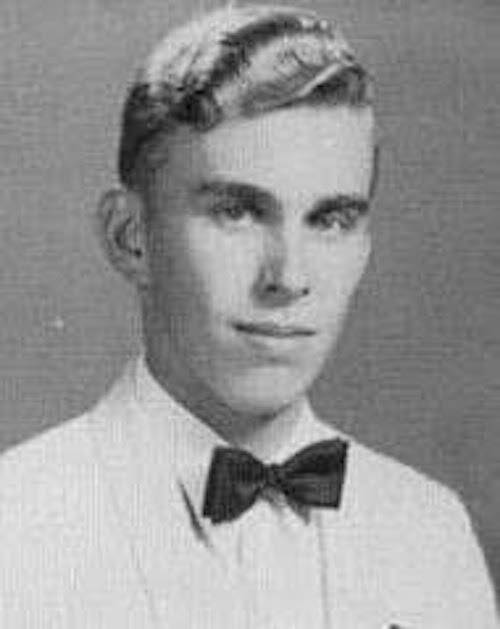
Public DomainRoland Doe, the pseudonym of Ronald Hunkeler, the boy whose harrowing exorcism in 1949 later inspired The Exorcist.
In the picturesque Bel-Nor neighborhood of St. Louis, Missouri, sits a beautiful, Colonial-style house on Roanoke Drive that was once the home of a boy called Roland Doe, a.k.a. Robbie Mannheim or Ronald Hunkeler.
It looks normal on the outside, with an all-brick exterior and white shutters framing the windows. Huge trees and neatly manicured bushes dot the yard. Yet one of the most extraordinary horror stories in American history transformed this house into a landmark for the macabre and provided the true story of The Exorcist.
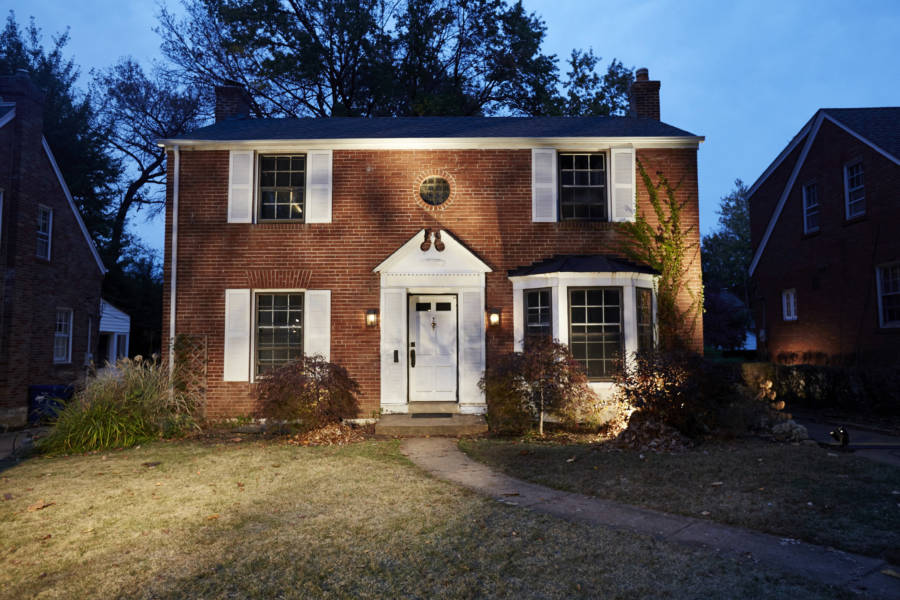
Discovery via Getty ImagesThe St. Louis house once home to “Roland Doe” as seen in 2015.
The story began in January 1949 in Washington, D.C., where 13-year-old Ronald Hunkeler, a.k.a. Roland Doe began exhibiting disturbing behavior that left his parents baffled and terrified. He was calm and normal during the day, but at night, he would suddenly erupt into screaming fits and other wild outbursts. Meanwhile, he would enter a trance-like state, make sounds in a guttural voice, and break out in scratches and red lines all over his body.
After getting nowhere with doctors, his horrified parents brought him to where their relatives lived in St. Louis and called in Jesuit priests to carry out a harrowing series of exorcisms. As they desperately tried to wrest the demons from his body, they claimed that the boy’s bed moved on its own, slid violently across the room, and knocked them over.
Finally, on April 18, the priests laid holy relics and crucifixes upon Ronald, shouting at Satan and telling the demon that St. Michael would battle him for the boy’s soul.
Seven minutes later, Ronald came out of his trance and told them simply, “He’s gone.”

The Troubled Life Of “Roland Doe”
The true story behind The Exorcist begins in the late 1940s in suburban Washington, D.C., with a German-American family.
Their 13-year-old, believed to be named Ronald Hunkeler (later referred to pseudonymously as “Roland Doe” or “Robbie Mannheim”), was despondent over the loss of his beloved Aunt Harriet. Harriet was a spiritualist who’d taught him many things — including how to use a Ouija board.

Wikimedia CommonsFather E. Albert Hughes, the first priest who attempted to perform an exorcism on Roland Doe in Washington, D.C.
In early January 1949, shortly after Harriet’s death, Ronald Hunkeler began to experience strange things. He heard scratching sounds coming from the floors and walls of his room. Water dripped inexplicably from pipes and walls. Most troubling of all was that his mattress would suddenly move.
Disturbed, Ronald’s family sought the help of every expert they knew. The family consulted doctors, psychiatrists, and their local Lutheran minister, but they were no help. The minister suggested that the family seek the assistance of the Jesuits.
Father E. Albert Hughes, the local Catholic priest, asked his superiors’ permission to perform an exorcism on the teenager in late February of 1949. The church granted Hughes’ request.
For the exorcism, Hughes strapped the boy to the mattress and began his recitations. But he had to stop the rite when Ronald broke off a piece of mattress spring and slashed the priest across his shoulders, leaving the exorcism unfinished.
A few days later, red scratches appeared on Roland Doe. One of the scratches formed the word ‘LOUIS,’ which indicated to Ronald’s mother that the family needed to go to St. Louis, where the Hunkelers had relatives, to find a way to save their son.
More Help Arrives For Ronald Hunkeler
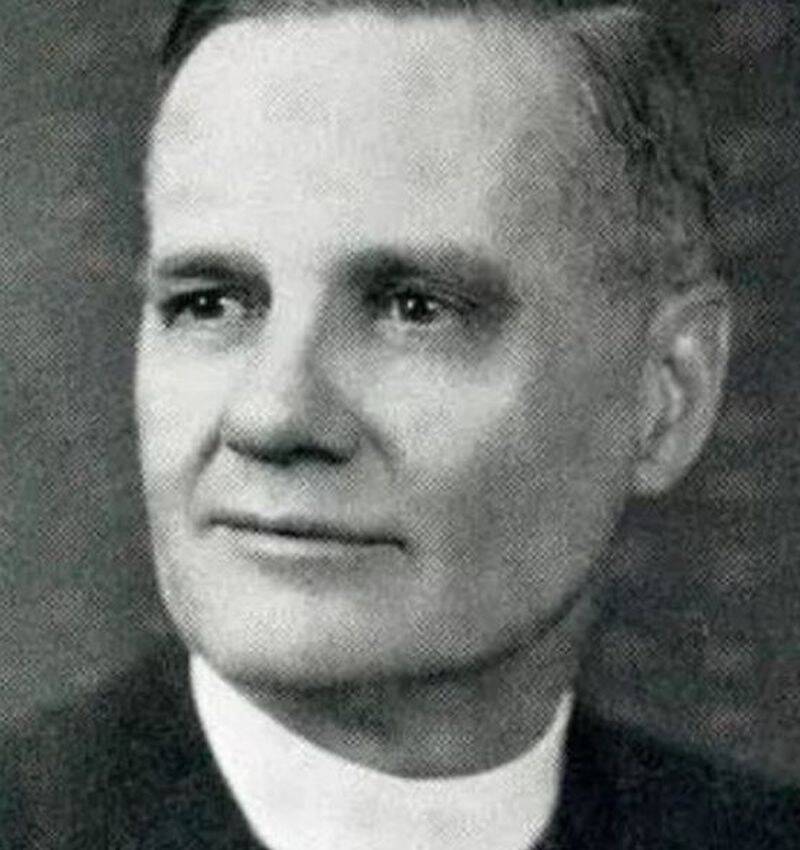
Public DomainWilliam Bowdern, one of two priests who performed the St. Louis exorcism of Roland Doe, a.k.a Robbie Mannheim or Ronald Hunkeler.
A cousin of the family was attending St. Louis University at the time of Ronald’s struggles. She put the Hunkelers in touch with Father Walter H. Halloran and Rev. William Bowdern. After consulting with the university’s president, these two Jesuits agreed to perform an exorcism on young Ronald with the help of several assistants.
The men gathered at the residence on Roanoke Drive in early March of 1949. There, the exorcists witnessed scratching on the boy’s body and the mattress moving violently. These were the same types of things that had happened in Maryland when the first exorcism failed.
Amid these bizarre happenings, Bowdern and Halloran, according to their reports, noticed a pattern in Ronald’s behavior. He was calm and normal during the day. But at night, after settling in for bed, he would exhibit strange behavior, including screaming and wild outbursts.
Ronald would also enter a trance-like state and start making sounds in a guttural voice. The priests also said they saw objects mysteriously flying in the boy’s presence and noted that he would react violently when he saw any sacred object presented by the attending Jesuits.
All of these details from the true story of The Exorcist made it into the film. But there were more that didn’t.
At one point during this weeks-long ordeal, Bowdern reportedly saw an “X” appear in scratches on Ronald’s chest, which the priest believed signified the number 10.
In another incident, a pitchfork-shaped pattern of red lines moved from the boy’s thigh and snaked down towards his ankle. These types of things happened every night for more than a month. Once, a red X appeared on Ronald’s chest, leading the priests to believe he was possessed by 10 demons.
The St. Louis Exorcism Of Roland Doe
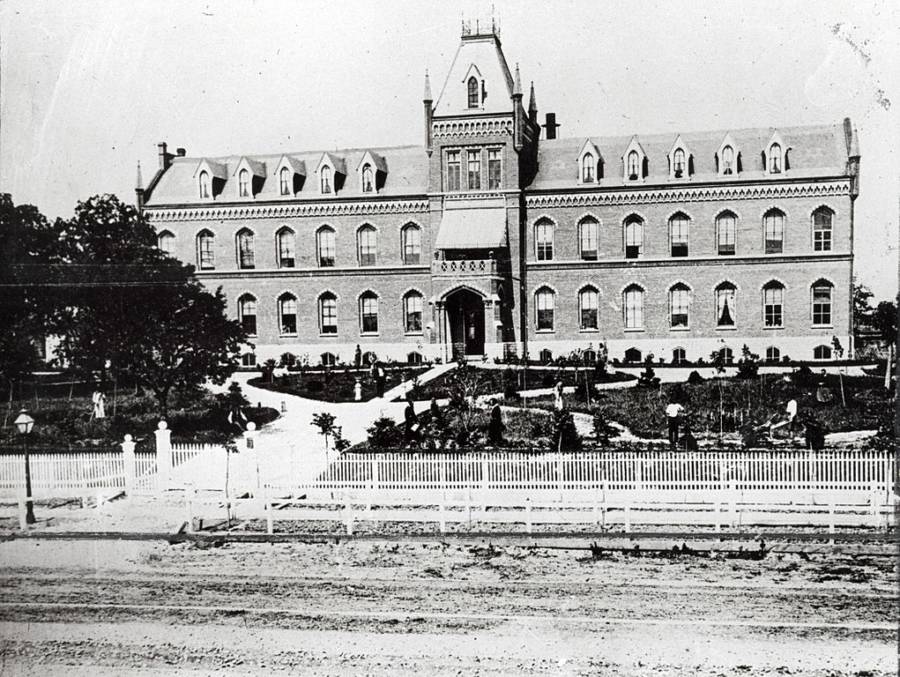
Wikimedia CommonsThe Alexian Brothers Hospital in St. Louis where Ronald Hunkeler, a.k.a. Roland Doe or Robbie Mannheim, was treated.
The two priests never gave up as they continued the exorcism night after night. On the evening of March 20, the exorcism reached an unhealthy new level.
Ronald urinated all over his bed and began shouting and cursing at the priests. Now, Ronald’s parents had had enough. They took him to Alexian Brothers Hospital in St. Louis for more serious treatment.
Finally, on April 18, a “miracle” occurred in Ronald’s room at Alexian Brothers. It was the Monday after Easter, and Ronald awoke with seizures. He yelled at the priests, saying that Satan would always be with him. The priests laid holy relics, crucifixes, medals, and rosaries on the boy.
At 10:45 p.m. that evening, the attending priests called on St. Michael to expel Satan from Ronald’s body.
They shouted at Satan, saying that St. Michael would battle him for Ronald’s soul. Seven minutes later, Ronald came out of his trance and said, “He’s gone.” The teenager recounted how he had a vision that St. Michael vanquishing Satan on a great battlefield.
According to Bowdern and Halloran, the strange occurrences and behavior ceased after that. And, despite providing the true story of The Exorcist, Ronald Hunkeler went on live a completely normal life from that moment forward.
The True Story Of The Exorcist

Warner Bros.A still from the film version of The Exorcist.
No one would have ever known about the exorcism of “Roland Doe” (nor would it have become the true story of The Exorcist) if not for an article in The Washington Post, which reported in August 1949 that priests had indeed performed an exorcism.
But the article was scarce on details. It didn’t even give a name, whether Roland Doe, Robbie Mannheim, or Ronald Hunkeler. And the case wouldn’t make headlines again for more than two decades.
In 1971, an author by the name of William Peter Blatty penned the bestselling novel The Exorcist, based on the unofficial diaries kept by Halloran and Bowdern. The book stayed on the bestseller list for 54 weeks and spawned the hit movie, which incorporated the demon Pazuzu, in 1973.
The movie took many liberties with its source material, turning the teenage Roland into a 12-year-old girl named Regan. The movie’s story also takes place entirely in Washington, D.C., and the Georgetown area, which is somewhat true-to-life since Ronald was hospitalized for a week in Georgetown in late February of 1949.
Although the scratches, shouting, spitting, and cursing in the movie mimicked what Ronald had experienced, the boy’s head never turned 360 degrees like Regan’s did in the film. Similarly, Ronald never vomited green matter during his many tantrums, nor did he use a bloody crucifix to masturbate.
What Happened After The Exorcism Of “Roland Doe”
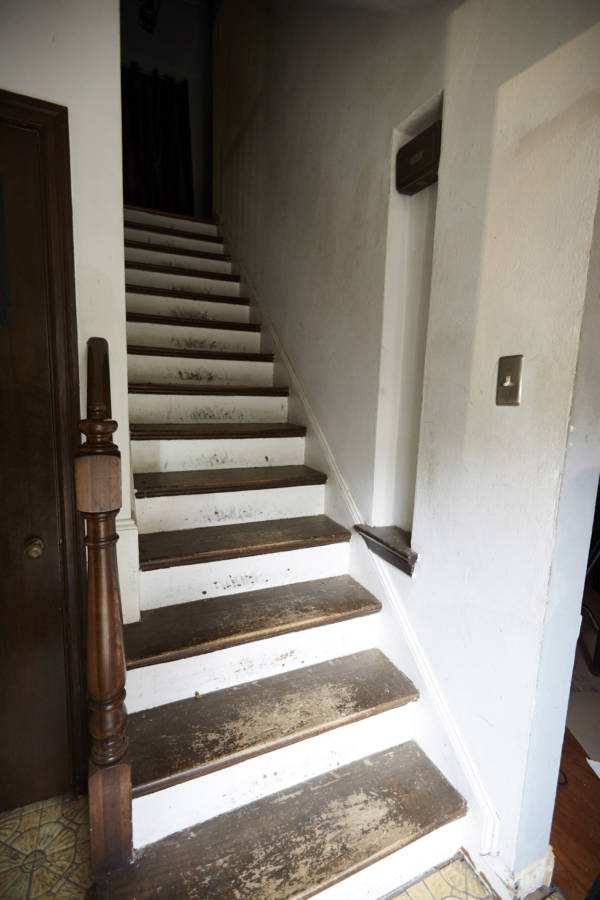
Discovery via Getty ImagesThe stairs inside the St. Louis house once home to “Roland Doe” as seen in 2015.
Following the exorcism of “Roland Doe,” his family moved back to the East Coast. Sources, which have also referred to him as Robbie Mannheim, say that he found a wife and started a family. He named his first son Michael after the saint believed to have saved his soul. If Roland is still alive today, he would be in his mid-80s.
William Bowdern died in 1983 after serving the Catholic Church for decades. Walter Halloran lived until 2005 when he died of cancer. He was the last surviving member of the team that had performed the exorcism of “Roland Doe.”
Following the St. Louis exorcism, the room in Alexian Brothers Hospital was boarded up and sealed. The entire facility was torn down in 1978. The house where the family lived in Maryland is now an empty lot after it was abandoned in the 1960s.
And while most experts believe the actual name of “Roland Doe” to be Ronald Hunkeler, only one person reportedly knows for sure.
In 1993, author Thomas B. Allen wrote a book on the story of Roland Doe’s exorcism called Possessed. In writing the book, which relies heavily on Halloran’s detailed accounts, Allen claims to have uncovered the true identity and story of “Roland Doe,” but has said that he will never reveal the person’s true name.
As for the cozy house on Roanoke Drive, it sold to new owners in 2005 for $165,000. Perhaps the buyers embraced the property’s legendary reputation that claims that Satan may have once lived in an upstairs bedroom.
After this look at “Roland Doe” and the true story of The Exorcist, read up on the exorcism of Anneliese Michel, the real-life Emily Rose. Then, read up on horror movies based on true stories.





